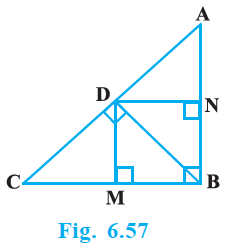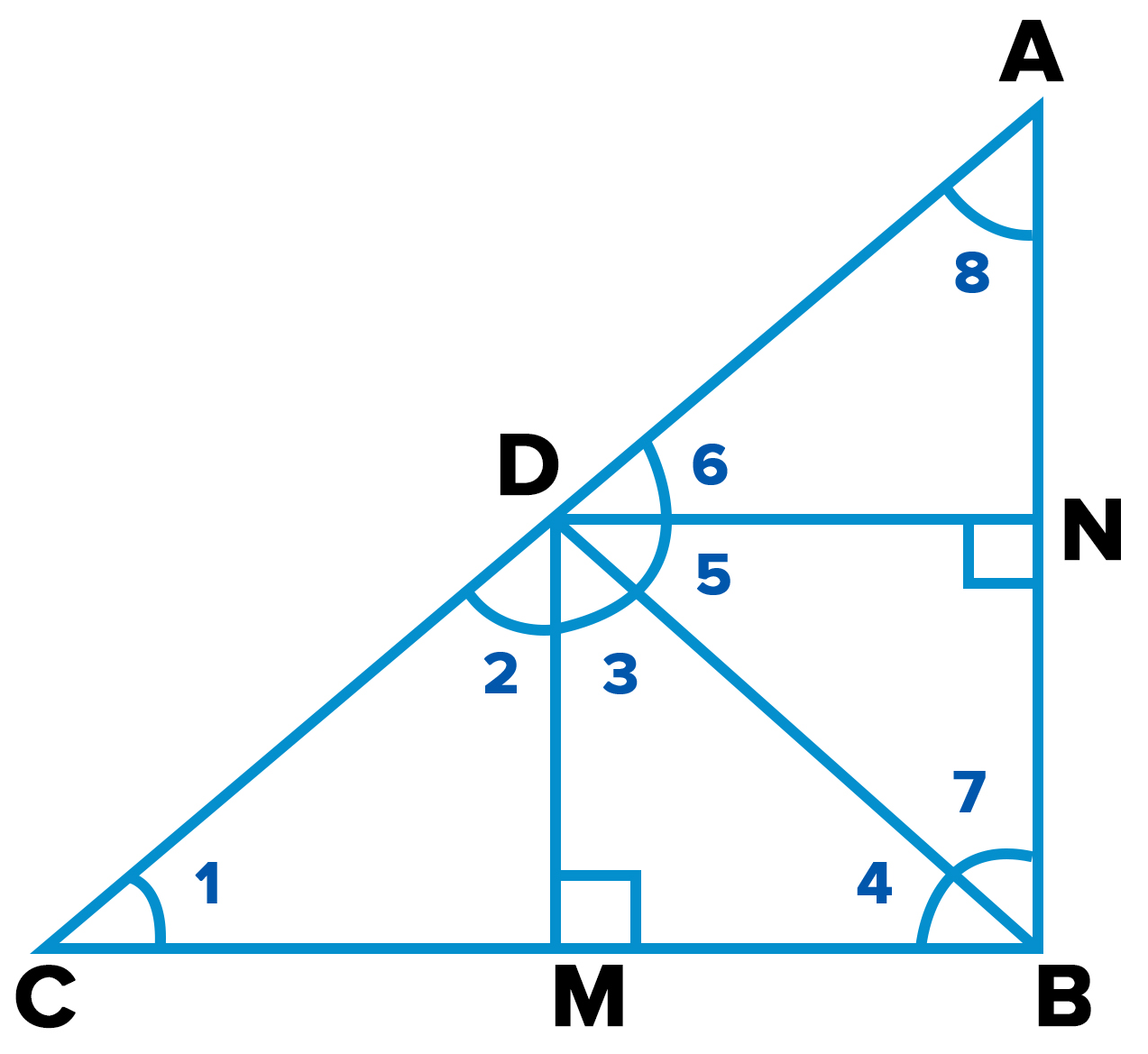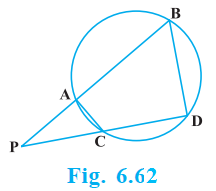In Fig. 6.57, D is a point on hypotenuse AC of Δ ABC, such that BD $\perp$ AC, DM $\perp$ BC and DN $\perp$ AB. Prove that :
(i) $DM^2 = DN . MC $
(ii) $DN^2 = DM . AN $

(i) $DM^2$ = DN . MC
Let us join Point D and B.

BD $\perp$ AC, DM $\perp$ BC and DN $\perp$ AB
Now from the figure we have,
DN || CB, DM || AB and $\angle B$ = 90 °
Therefore, DMBN is a rectangle.
So, DN = MB and DM = NB
The given condition which we have to prove, is when D is the foot of the perpendicular drawn from B to AC.
$\angle CDB = 90°$ ⇒ $\angle 2 + \angle 3$ = 90°……………………. (i)
In ∆CDM, $\angle 1 + \angle 2 + \angle DMC$ = 180°
$\angle 1 + \angle 2 = 90°$ …………………………………….. (ii)
In ∆DMB, $\angle 3 + \angle DMB + \angle 4 = 180°$
$\angle 3 + \angle 4 = 90°$ …………………………………….. (iii)
From equation (i) and (ii), we get
$\angle 1 = \angle 3$
From equation (i) and (iii), we get
$\angle 2 = \angle 4$
In ∆DCM and ∆BDM,
$\angle 1 = \angle 3$ (Already Proved)
$\angle 2 = \angle 4$ (Already Proved)
∆DCM ∼ ∆BDM (AA similarity criterion)
$\dfrac{BM}{DM} = \dfrac{DM}{MC}$
$\dfrac{DN}{DM} = \dfrac{DM}{MC}$ (BM = DN)
$DM^2$ = DN × MC
Hence, proved.
(ii) In right triangle DBN,
$\angle 5 + \angle 7 = 90°$ ……………….. (iv)
In right triangle DAN,
$\angle 6 + \angle 8 = 90°$ ………………… (v)
D is the point in triangle, which is foot of the perpendicular drawn from B to AC.
$ \angle ADB = 90° ⇒ \angle 5 + \angle 6 = 90°$ ………….. (vi)
From equation (iv) and (vi), we get,
$\angle 6 = \angle 7$
From equation (v) and (vi), we get,
$\angle 8 = \angle 5$
In ∆DNA and ∆BND,
$\angle 6 = \angle 7$ (Already proved)
$\angle 8 = \angle 5$ (Already proved)
∆DNA ∼ ∆BND (AA similarity criterion)
$\dfrac{AN}{DN} = \dfrac{DN}{NB}$
$DN^2$ = AN × NB
$DN^2$ = AN × DM (Since, NB = DM)
Hence, proved








